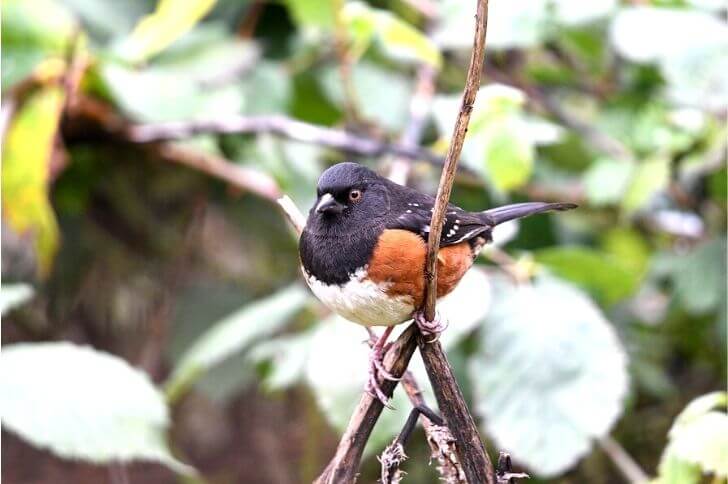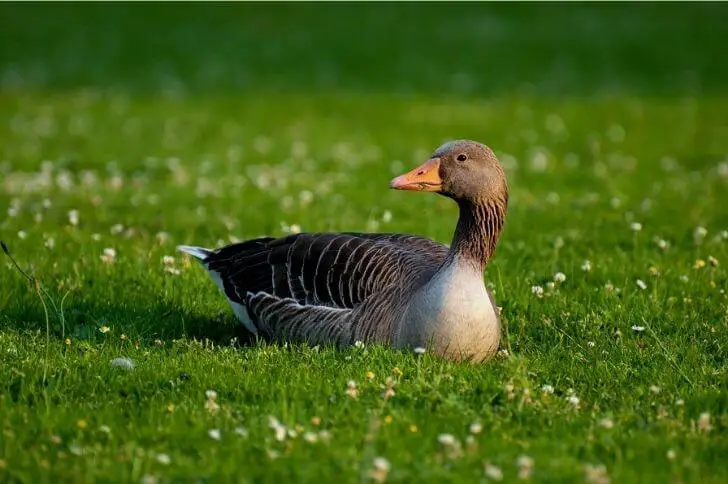Bald eagles are a magnificent sight. These powerful birds with their white heads and tail feathers are the national bird of the United States. The bald eagle was once on the brink of extinction but thanks to conservation efforts, they have made a comeback. Bald eagles can be found throughout Michigan, but are most commonly seen near lakes and rivers where they hunt for fish.
They are a protected species. And if you are keen on identifying babies, juveniles and adult bald eagles in Michigan, read on below. We’ll also list some of the best spots where you can see them in all their majesty.
Bald Eagle Life Cycle
Michigan Eagle Nest
Nest site: Cliff faces, tall trees, ground
Materials: Sticks, feathers for lining
Construction: Female bald eagle
Time: Early February
Height: 2-4 feet tall
Diameter: 5 to 6 feet
Nesting behavior is an important part of the bald eagle’s life cycle. Bald eagles typically nest near large bodies of water, as they require a ready supply of fish to feed their young. Nest sites are often reused year after year, and may be passed down through generations of eagles.
Bald eagle nests are large and sturdy, built up with sticks and other materials brought to the site by the birds. The female lays 1-3 eggs per clutch, which are incubated for about 35 days.
Juvenile bald eagles
Bald eagles are known to live around 20-30 years in the wild, but juveniles have a much different lifestyle.
Juvenile bald eagles are very different from their adult counterparts. For one, they have yet to develop the distinctive white head and tail feathers that give the bald eagle its name. Juveniles are also much more likely to be found in groups, as they do not yet have mates or territories of their own.
Interestingly, juvenile bald eagles actually eat a lot more than adults. While an adult eagle might eat one or two meals a day, a juvenile can consume up to five times as much food!
Related Read: Cape Cod birds
Adults
The characteristic white head and tail of an adult bald eagle is a result of a process called molt. Molt is when birds shed their feathers and grow new ones. For bald eagles, this process starts when they are 4-5 years old and can take up to 3 years to complete.
Where are bald eagles located in Michigan?
The bald eagle is a common sight throughout the state. These magnificent birds can be found in all 83 of Michigan’s counties.
These large birds of prey typically nest near large bodies of water where there are plenty of fish to eat. In Michigan, this means that bald eagles can be found near lakes, rivers, and even the Great Lakes.
It is worth noting the numbers vary per county. While bald eagles can be found all over Michigan, some counties are home to more bald eagles than others. The top five counties for bald eagle sightings are: Alcona, Alpena, Cheboygan, Iosco, and Oscoda.
Related Read: Learn about bald eagles in Florida
How common are bald eagles in Michigan?
Michigan is home to more bald eagles than any other state in the lower 48 states.
There are an estimated 800 bald eagles pairs in Michigan. The birds can be found throughout the state, but are most commonly seen near large bodies of water. Bald eagles typically nest near rivers or lakes where there is a plentiful supply of fish.
Bald eagles were once on the brink of extinction, but thanks to endangered species act, their population has rebounded in recent years. But, they’re still considered a threatened avian species.
When do eagles lay eggs?
When do eagles lay eggs in Michigan? The short answer is February through May, with most of the nesting activity occurring from mid-March to early April. However, there is some variation depending on the region of the state.
In general, eagles in Michigan lay one to three eggs per clutch, with two being the most common. The incubation period is about 35 days, and both parents share in this duty.
Do eagles stay in Michigan during the winter?
These majestic birds of prey are a year-round resident in the state, and can even be seen during the winter months. Although they may not be as active during the colder weather, eagles still need to eat and will take advantage of any open water they can find.
Where can I see eagles in Michigan?
There are many places in Michigan where you can see eagles. One of the best places to see them is at the Seney National Wildlife Refuge. The refuge, in the Upper Peninsula, covers nearly 95,000 acres. It is home to many different species of animals, including bald and golden eagles.
Another great place to see eagles in Michigan is at the Sleeping Bear Dunes National Lakeshore. The lakeshore is located on the shores of Lake Michigan and covers more than 35 miles of coastline. It is a popular spot for bird watching, and there are often eagles seen flying overhead or perching in trees along the shoreline.
Finally, another great place to view eagles in Michigan is at the Detroit River International Wildlife Refuge. The refuge is located along the Detroit River and covers more than 5,000 acres of land.
How many bald eagles are left in Michigan?
In Michigan, the bald eagle population has been on the rebound in recent years. Thanks to conservation efforts, there are now an estimated 800 eagles in the state. While this is still a far cry from the numbers once seen here, it is a hopeful sign for the future of this majestic bird.
What is the largest bird of prey in this State?
What is the largest bird of prey in Michigan? This is a question that many people ask, as they are curious about the different types of birds that call this state home. The answer to this question may surprise you, as the largest bird of prey in Michigan is actually the bald eagle.
The bald eagle is a massive bird, with a wingspan that can reach up to 7 feet. They are easily recognizable by their white head and tail, which contrast sharply with their dark brown body.
Despite their large size, bald eagles are actually quite shy and reclusive. They typically nest in remote areas, away from human activity.
What do bald eagles do at night?
As the sun sets, bald eagles begin to roost in trees near their favorite hunting grounds. They will often return to the same roosting spot night after night. While they do not sleep in the traditional sense, bald eagles do enter a light trance-like state during which they are less alert and more vulnerable to predators.
During the hours of darkness, bald eagles remain on the lookout for potential threats. If they sense danger, they will take flight and move to a safer location. If all is quiet, they will stay put and keep watch over their territory.
Bald eagles are nocturnal hunters. They use their exceptional vision and hearing to locate prey that is active at night. Small mammals such as rodents and rabbits are among their favorite foods, but they will also eat fish, reptiles, and amphibians.
What do bald eagles eat?
These powerful birds of prey are known for their impressive size and hunting skills. So, what do bald eagles eat in Michigan?
They primarily eat fish, but they will also feast on small mammals and birds. In Michigan, the Great Lakes provide a bountiful supply of fish for these predators. Eagles will perch on tree branches or cliffs overlooking the water, waiting to spot their next meal. When they see an opportunity, they will swoop down and snatch the fish out of the water with their talons.
In addition to fish, bald eagles will also eat rabbits, mice, and other small mammals. They have even been known to kill deer fawns and raid squirrel nests.
Do eagles stay in Michigan year round?
Yes, eagles do stay in Michigan year round. The majestic bird is the state bird of Michigan and can be seen throughout the year in various parts of the state. In the winter, eagles can be found near open water where they prey on fish. In the spring and summer, eagles can be found in wooded areas where they build their nests and raise their young.
Sources:
https://mnfi.anr.msu.edu/species/description/10937/Haliaeetus-leucocephalus
https://www.allaboutbirds.org/guide/Bald_Eagle/id
Hi, my name is Steve. My friend and I started the spanishbirdguides.com to share our passion with other like-minded people. So, if bird watching is your thing, you’ll love this blog. I’ll share what I’ve learnt about both local birds and those found in other parts of the world. Also, I’d love to hear your experiences.



